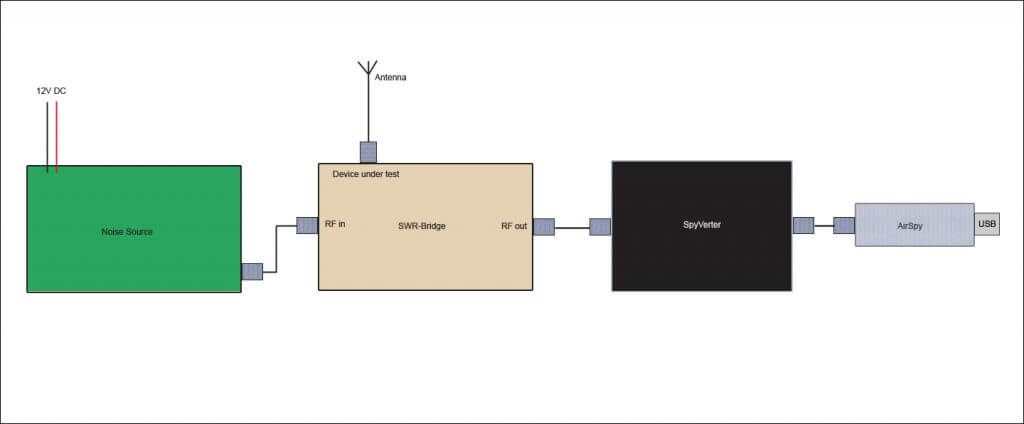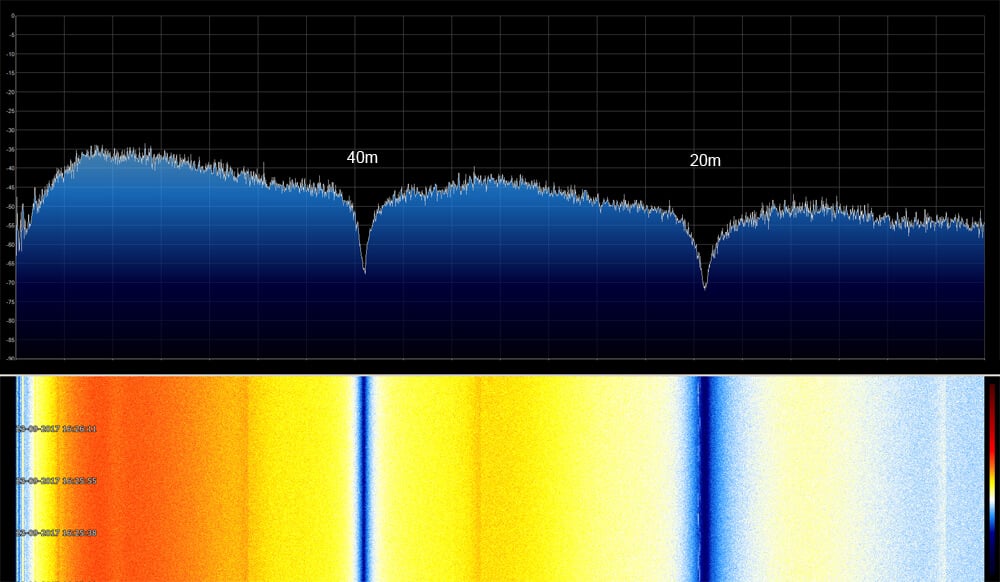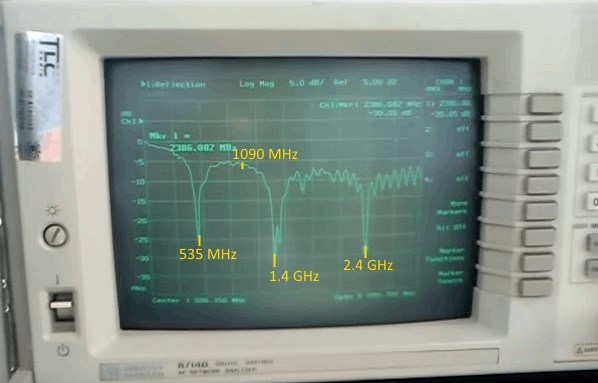Tuning an HF Antenna with an Airspy, SWR-Bridge and Noise Source
Over on his blog Anders J. Ørts has created a good writeup showing how he used the combination of an Airspy SDR with SpyVerter upconverter, SWR-Bridge and a noise source to tune his HF dipole for the 40 meter and 20 meter bands. If you’re interested we also have a writeup on doing something similar with the RTL-SDR here.
By connecting the output of the noise source to the SWR-bridge input, and the antenna to the DUT port the return loss or SWR of the antenna can be measured with the Airspy. To get a wider than 10 MHz view of the spectrum Anders uses the SpectrumSpy software for the Airspy which is a spectrum analyzer application that allows you to view any bandwidth that you like. With the Airspy, noise source and antenna all connected correct to the SWR-Bridge significantly notches in the spectrum show up in SpectrumSpy. These notches are the resonant points of the antenna. Visually seeing these notches allows you to fine tune the length of the antenna elements for best SWR.


